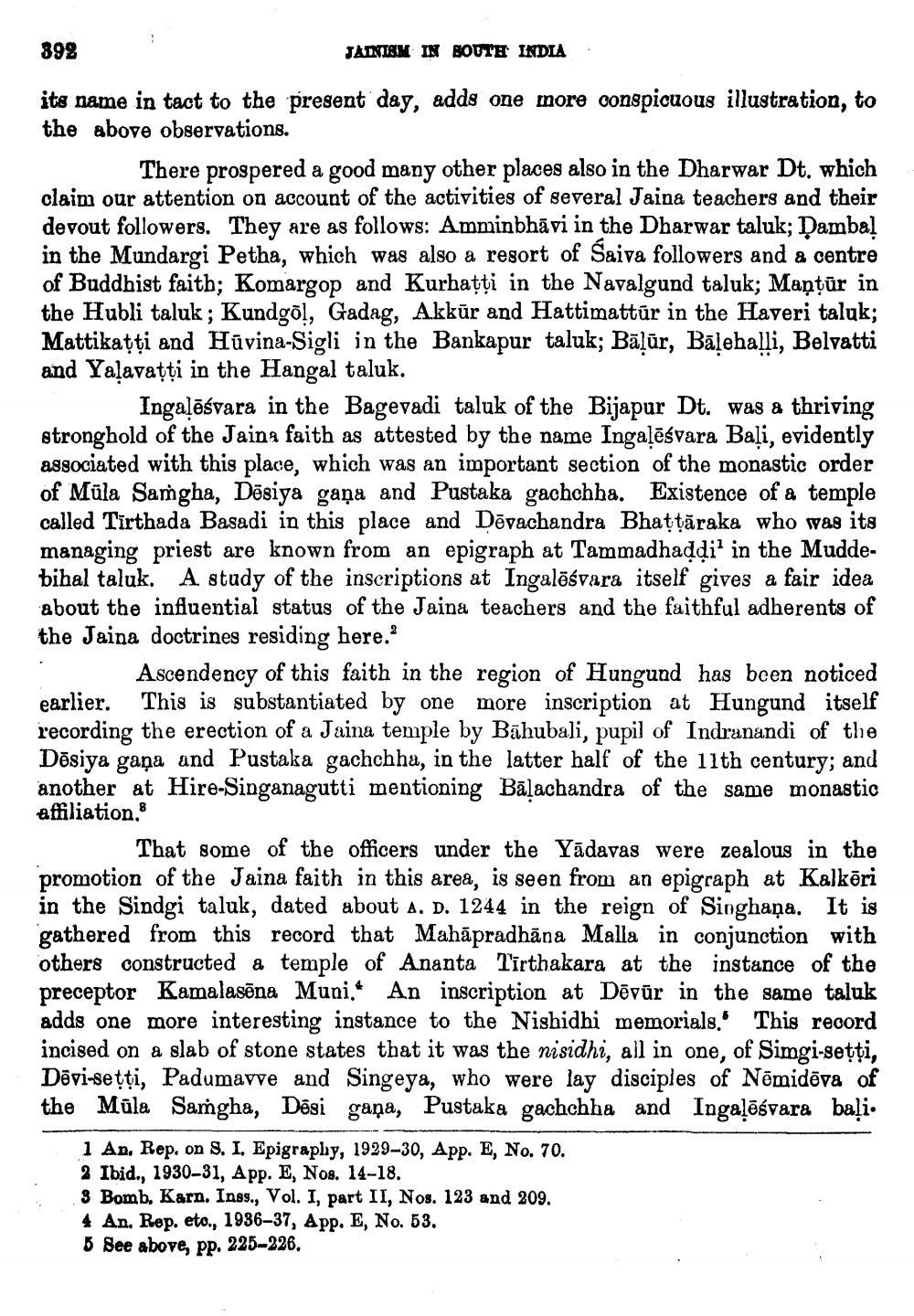________________
898
:
JAINISM IN BOUTE INDIA
its name in tact to the present day, adds one more conspicuous illustration, to the above observations.
There prospered a good many other places also in the Dharwar Dt. which clain our attention on account of the activities of several Jaina teachers and their devout followers. They are as follows: Amminbhāvi in the Dharwar taluk; Dambal in the Mundargi Petha, which was also a resort of Saiva followers and a centre of Buddhist faith; Komargop and Kurhatti in the Navalgund taluk; Maņţūr in the Hubli taluk; Kundgöl, Gadag, Akkūr and Hattimattúr in the Haveri taluk; Mattikatti and Hūvina-Sigli in the Bankapur taluk; Bāļūr, Bālehalli, Belvatti and Yalavațti in the Hangal taluk.
Ingaļāśvara in the Bagevadi taluk of the Bijapur Dt. was a thriving stronghold of the Jaina faith as attested by the name Ingaļēśvara Bali, evidently associated with this place, which was an important section of the monastic order of Mūla Samgha, Dēsiya gana and Pustaka gachchha. Existence of a temple called Tirthada Basadi in this place and Dēvachandra Bhattāraka who was its managing priest are known from an epigraph at Tammadhaddi' in the Muddebihal taluk. A study of the inscriptions at Ingalēśvara itself gives a fair idea about the influential status of the Jaina teachers and the faithful adherents of the Jaina doctrines residing here.
Ascendency of this faith in the region of Hungund has been noticed earlier. This is substantiated by one more inscription at Hungund itself recording the erection of a Jaina temple by Bāhubali, pupil of Indranandi of the Dēsiya gaña and Pustaka gachchha, in the latter half of the 19th century; and another at Hire-Singanagutti mentioning Balachandra of the same monastic affiliation.
That some of the officers under the Yādavas were zealous in the promotion of the Jaina faith in this area, is seen from an epigraph at Kalkēri in the Sindgi taluk, dated about a. D. 1244 in the reign of Singhaņa. It is gathered from this record that Mahāpradhāna Malla in conjunction with others constructed a temple of Ananta Tīrthakara at the instance of the preceptor Kamalasēna Muni. An inscription at Dēvūr in the same taluk adds one more interesting instance to the Nishidhi memorials. This record incised on a slab of stone states that it was the nisidhi, all in one, of Simgi-setti, Dāvi-setti, Padumavve and Singeya, who were lay disciples of Nēmidēva of the Mūla Samgha, Dēsi gaña, Pustaka gachchha and Ingalēśvara baļi.
1 An, Rep. on S. I. Epigraphy, 1929-30, App. E, No. 70. 2 Ibid., 1930-31, App. E, Nos. 14-18. 3 Bomb, Karn. Inss., Vol. I, part II, Nos. 123 and 209. 4 An, Rep. eto., 1936–37, App. E, No. 53. 8 See above, pp. 225-226.




